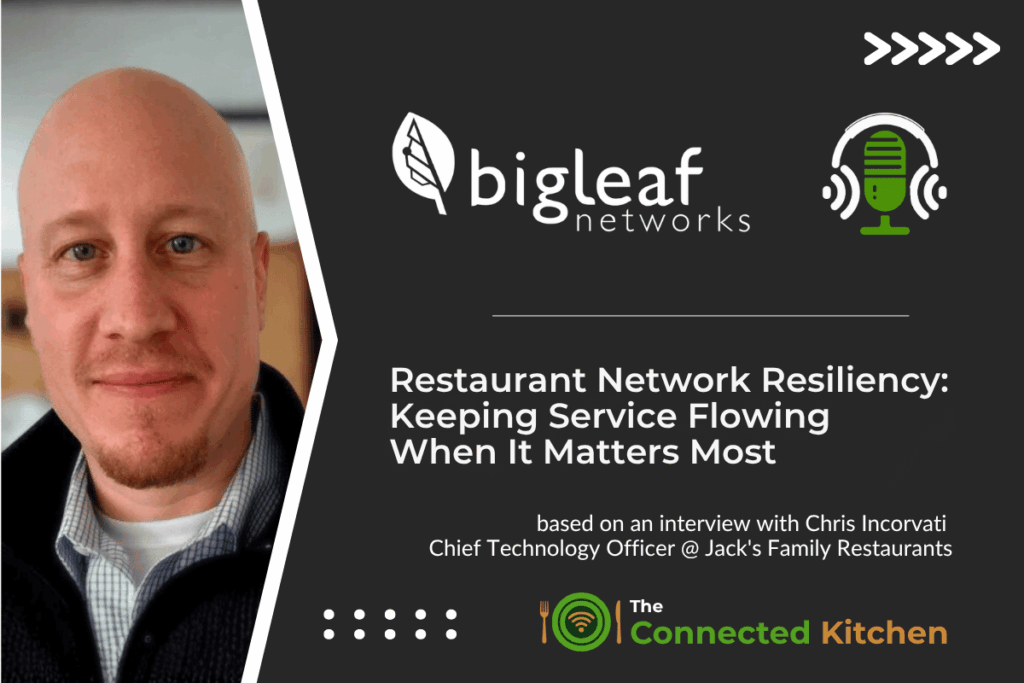Why Every Minute of Downtime Costs More Than You Think
When a network fails mid-rush, the damage isn’t just revenue—it’s guest trust. Chris Incorvati, CTO at Jack’s Family Restaurants, views connectivity as the invisible backbone of hospitality. A reliable network keeps fries hot, payments instant, and data clean. Without it, even the best AI can’t help. You need restaurant network resiliency.
Design for Failure—So Guests Never Notice
Redundancy is the plan, not the backup. Each Jack’s location pairs a primary ISP with a multi-carrier cellular failover. If one path drops, traffic reroutes automatically. This design prevents the chaos of manual resets and lets teams keep serving through storms or rural dead zones. Guests simply experience seamless service.
“Redundancy is key, and we’ve got to do as much as we can to keep the stores online.”
— Chris Incorvati
Cloud POS: The Fastest Way to Bounce Back
Cloud architecture turns outages into momentary pauses instead of full stops. Orders captured offline sync instantly once the connection returns—no lost tickets, no data cleanup. That continuity means finance teams keep clean reporting while operators stay focused on guests, not spreadsheets.
Prepare People as Well as Systems
Technology only works when teams know how to react. Stores rehearse offline workflows: capturing manual tickets, switching payment modes, syncing once online.
That readiness converts potential panic into confident recovery. Resilience isn’t just hardware—it’s a habit.
The Payoff of Always-On Design
- Shorter recovery times and cleaner data
- Fewer abandoned orders during outages
- Higher trust from guests and franchise owners
- Less stress for operators during peak demand
Reliability may be invisible, but in the Connected Kitchen, it’s the ingredient every customer tastes.
Related Links:
- The Digital Kitchen: From Cost Center to Growth Driver
- Restaurant Technology Strategy: Designing Systems That Serve People
- AI in Quick-Service Restaurants: Turning Automation into Hospitality
- Subscribe to the LinkedIn Newsletter
- Listen on Captivate: Go Beyond the Connection
- Follow us on social: Linkedin | Facebook | Instagram
Youtube Videos and Shorts:
- Episode: The Connected Kitchen with Chris Incorvati | Jack’s Family Restaurants | Go Beyond the Connection
- Short: AI That Serves People First #podcast #restaurant #aitechnology
- Short: Building Always-On Stores #podcast #gobeyondtheconnection #connectedkitchen #connectivity
- Highlight Reel: Invisible Tech, Visible Impact | Chris Incorvati on ROI
- Watch the YouTube Playlist of video episodes
- Watch the YouTube Shorts Playlist
